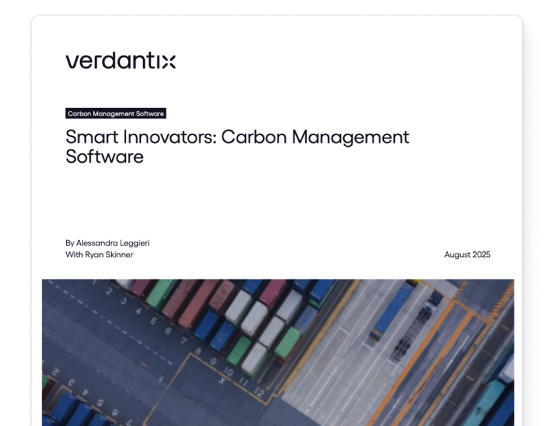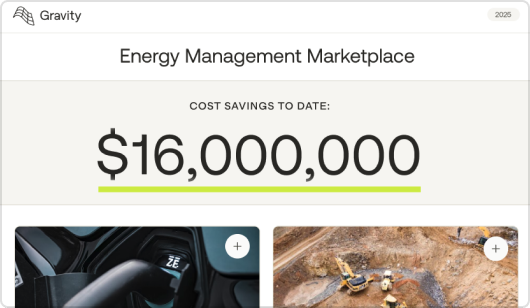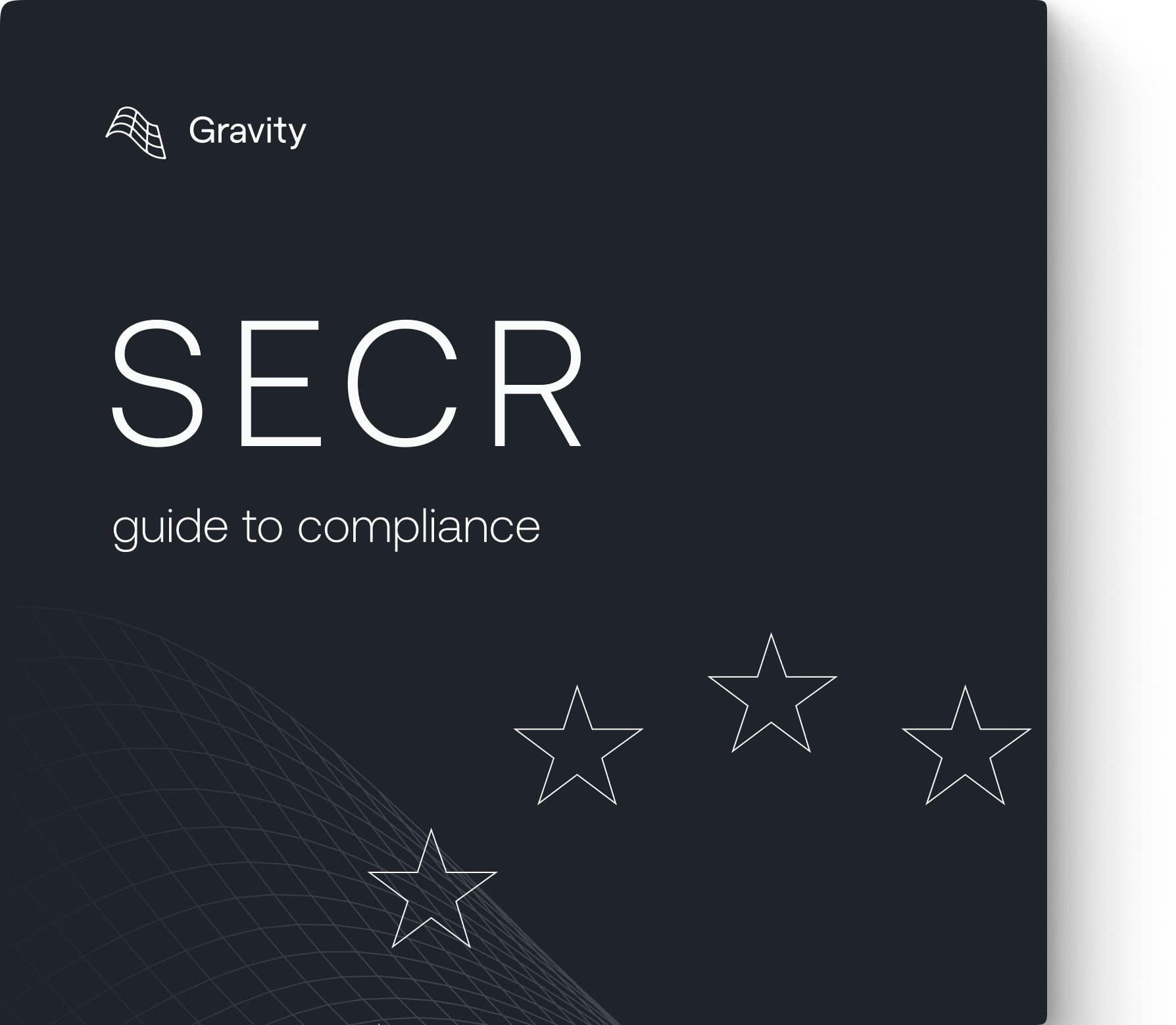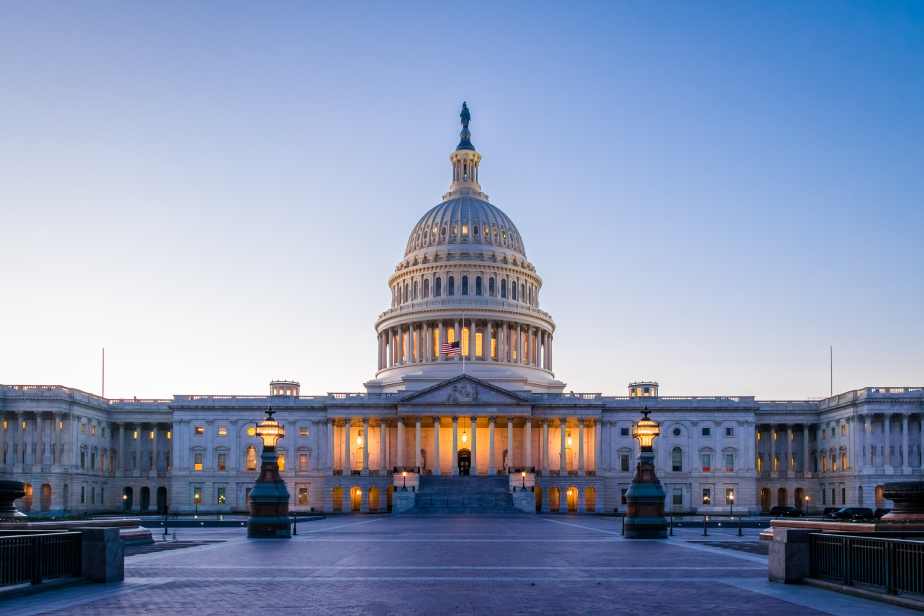See why customers are switching to Gravity
The Latest on the SEC's New Climate Related Disclosure Standards
After more than two years of debate, the Securities and Exchange Commission (SEC) approved the final version of its climate disclosure rule on March 6. See what it means for your business.

[Updated April 8, 2024]
After more than two years of debate, the Securities and Exchange Commission (SEC) approved the final version of its climate disclosure rule on March 6. This landmark rule requires publicly traded companies of a certain size to include climate-related disclosures in their registration statements and periodic reports, including qualitative assessments, measurement of Scope 1 and 2 greenhouse gas emissions, and information about climate-related risks that are reasonably likely to impact their business.
On April 4, 2024, the SEC told the US Court of Appeals for the Eighth Circuit it would pause the requirements for public companies to report their greenhouse gas emissions and disclose climate-related risks to their business, pending the court’s review. However, given that this action will likely speed up the court’s decision, it is a good time to get up to date on the latest rules.
To save you reading the 800+ page report, this post will quickly ramp you up on the SEC’s final rule, including:
- What is the SEC Climate Related Disclosure rule
- What types of GHG emissions must be reported and how
- When will businesses need to report
- The implications of this ruling
- How businesses can reduce risk
What is the SEC Climate Related Disclosure Standards rule?
The SEC climate regulation standardizes what public companies disclose about greenhouse gas emissions, risks, and how much money they are spending on the transition to a low-carbon economy.
At a high level, the final rules require companies to disclose:
- Climate risks impacting the business: Companies will need to disclose the potential climate-related risks they face, along with the actual or material impact of climate-related risks on their business strategy, results of operations, or financial condition. They will also need to highlight any activities they’ve taken to mitigate climate-related risks and the processes they undertake to identify potential risks.
- Climate-related action: Companies with specific climate targets or goals that have materially affected or are reasonably likely to affect the registrant’s business, results of operations, or financial condition will need to highlight these in their reporting. They also would need to reveal any expenditures related to their climate goals, such as purchases of carbon offsets or renewable energy credits.
- Carbon emissions: Large companies only will be required to report “material” carbon emissions that their company produces (scope 1 and scope 2 emissions). Small companies will be exempt.
What types of carbon emissions need to be reported?
The SEC will require large companies to report “material” Scope 1 and Scope 2 emissions. Scope 1 emissions are the emissions a company produces through its own operations, and Scope 2 emissions are what a company is responsible for from purchased energy and power generation. Smaller businesses–those below $70M public float or $100M in revenue–are exempt from this disclosure.
There is no special definition for when emissions are considered material. The materiality standard in the US is rooted in fiduciary duty to investors and shareholders. The current materiality standard comes from a 1976 Supreme Court decision, TSC Industries, Inc. v. Northway Inc., in which the Court stated “a substantial likelihood that a reasonable shareholder would consider it important in deciding how to vote… Put another way, there must be a substantial likelihood that the disclosure of the omitted fact would have been viewed by the reasonable investor as having significantly altered the ‘total mix’ of information made available.” As with other SEC disclosures subject to a material standard, it will be up to these companies to determine whether their emissions are material.
However, the climate disclosure rule does note some examples of when a company’s Scope 1 or Scope 2 emissions may become material. One is if there is a transition risk associated with those emissions — for example, if a company anticipates that future regulations would increase their costs. Another is if a company has articulated a climate goal, like an ambition to achieve net-zero emissions, to the public.
Despite speculation, the SEC will not require companies to report on Scope 3 emissions, or those emissions generated from a company’s supply chain or portfolio. The SEC said it had dropped the requirement from the initial draft rule after considering comments from companies and others related to the cost of reporting Scope 3 emissions and the reliability of such information.
What is the timeline for compliance with the new SEC climate rules?
The rule will be rolled out in a phased approach that has larger companies submitting reports first, while smaller companies have more time to prepare before they are obligated to comply with reporting.
- Large accelerated filers (LAFs) will be required to start reporting climate-related risks first in 2025, with Scope 1 and 2 GHG emissions due in 2026
- Accelerated Filers (AFs) will start reporting climate-related risks in 2026 and GHG emissions in 2028.
- Smaller reporting companies (SRCs), Emerging Growth Companies (EGCs), and Non-accelerated filers (NAFs) will not be required to disclose their GHG emissions, but will have to disclose risks starting in 2027.
The SEC provided this graph showcasing how reporting will be phased (definitions of large accelerated filers and other categories can be found here):

How will companies disclose?
The Climate-Related Disclosure rule will require companies to include it as part of their regular, formal annual filings with the SEC. Accelerated filers and large accelerated filers will also need to include attestation reports with the filing as that requirement phases in. The reports will be filed along with their regular second quarterly report.
What happens if businesses do not comply with the SEC climate rule?
One of the most immediate consequences of non-compliance with SEC regulations is the risk of legal and financial penalties. The SEC has the authority to impose fines, sanctions, and even criminal charges on companies that violate its rules.
What is the impact of the SEC’s Climate Related Disclosure Standards regulation?
In the two years since the SEC first proposed their rules in March 2022, the global state of climate disclosure regulation has changed dramatically. Since then:
- The European Union introduced the Corporate Social Reporting Directive, which requires large companies with a presence in the EU to disclose their Scope 1, 2, and 3 emissions.
- The International Sustainability Standards Board (ISSB) finalized the IFRS in 2023 as the global standard for sustainability and climate change reporting, including Scope 1, Scope 2, and Scope 3 emissions. IFRS is not used in the US, but is present in 132 other jurisdictions.
- California introduced its own emissions reporting requirements with CA SB 253, which requires companies with over $1 billion in total annual revenue that do any business in the state of California disclose their Scope 1, 2, and 3 emissions annually.
- Local Law 97 in New York introduced even stricter legislation, which requires most buildings over 25,000 square feet to meet new energy efficiency and greenhouse gas emissions limits as of 2024.
- Many larger commercial companies, such as Walmart, Unilever, and HP, now require GHG emissions disclosures from their suppliers.
Many large US companies – including those who need to report to the SEC – are also subject to these regulations, creating a compliance conundrum. Ultimately, companies will need to collect the data required to report to the highest standard in the regions in which they operate. Given that many of these obligations are more extensive than the SEC’s proposal, it limits the impact of the ruling.
For example, the SEC’s ruling does not require Scope 3 reporting, while the CSRD requires Scope 3 reporting and a double materiality standard; companies must report how climate-related risks could impact their financial performance as well as how their businesses impact the environment. California’s new law also requires supply chain emissions disclosure.
Similarly, while Europe requires all public companies to disclose their carbon emissions, the SEC standards only require large companies to measure and report their GHG emissions. This means that many smaller companies who do not operate internationally may not need to report.
At the same time, market pressures are also rising. Investors, commercial companies, and customers are requesting greater visibility into emissions data to make informed decisions. While Scope 3 emissions may not be mandated, given that Scope 3 emissions can account for up to 70% of total emissions, investors and customers are increasingly requesting this data.
How can businesses mitigate risk and deliver value?
US companies are experiencing very real pain as the cost of energy nearly doubles in some parts of the country and we see recurring disruptions to global natural gas prices. This volatility is placing great pressure on businesses.
Addressing these pain points presents a very real opportunity to reduce risk and drive value. In recent years, the cost of new technologies that can improve energy efficiency, such as next-generation HVAC units, LED lighting, and building envelopes have dropped remarkably in price. In fact, it is estimated that acting on energy demand could save up to $2 trillion in annual savings if measures were to be taken by 2030.
In addition to cost savings, these projects also yield emissions savings and reputational benefits. For example, upgrading an HVAC system not only reduces energy consumption by up to 40%, but also lowers utility bills by up to 20% and increases employee comfort. There can even be tax benefits for investing in these types of upgrades, helping to manage upfront costs. Once implemented, companies can also highlight the emissions reductions as a climate win.
Despite these opportunities, many companies will still need to face the often painstaking process of measuring GHG emissions to comply with the SEC Climate Disclosure rule and other regulatory requirements. However, new solutions that help automate and streamline data collection and ingestion can remove that pain, helping to save countless hours and resources and leaving businesses able to focus on addressing risks and costs. Furthermore, companies can use this data to identify potential emissions “hotspots” that are ripe for intervention to reduce risk and save money.
By investing in pragmatic steps that make sense for your business, companies can become more resilient, decrease costs, and reduce risk—all while also reducing emissions.
How can Gravity help to reduce risk?
Gravity offers assistance at every phase of your emissions compliance and energy efficiency work. Please reach out if you’re interested in learning more about:
- Identifying low-hanging opportunities for investment that will reduce cost, risk, and emissions
- Finding trusted partners to implement energy efficiency or decarbonization projects
- Moving away from time-consuming box checking and automating regulatory disclosure
- Engaging your supply chain (or portfolio companies) to accelerate measurement and/or action
What's next?
We will continue to update this post with more details as we comb through the full report. We’ll also be preparing advice on how to navigate this new climate rule and minimize the pain of compliance reporting so you can stay focused on pragmatic action. Sign up below or follow us on LinkedIn for updates!
Download the report to learn more
VerdantixTM Smart Innovators: Carbon Management Software

Curious about Gravity's Energy Management Marketplace?
Book a demo to learn more

Curious about Gravity's Europe expansion?
Book a demo to learn more
.png)
Ready to get off the merry-go-round?
Book a demo to learn more.

Curious about Gravity's CDP accreditation?
Book a demo to learn more.

California's Carbon Reporting Rule
Watch our webinar to prepare for California's new climate regulation

Curious about these features?
Book a demo to learn more.

Be prepared for SECR
Meet with our team, walk through the steps you'll need to take to report, and start a free trial to see how Gravity can help you report with greater speed and accuracy.

See the platform in action
Watch a short video to see why leaders like WM, TTI, and WAF have chosen to work with Gravity to simplify carbon accounting and drive business impact.

Meet with our team, walk through the steps you'll need to take to report, and start a free trial to see how Gravity can help you report with greater speed and accuracy.

Cut down reporting time by 70%
Request a demo to see these features in action and learn how they can save hours of manpower in your next reporting cycle.
Looking to Uplevel Your Sustainability Programs in 2025?
Reach out for a personalized meeting with our climate experts to find opportunities to save time on regulatory compliance, simplify internal communications, and execute projects that deliver real business impact.
Find energy efficiency projects that deliver value
Learn how to reduce energy costs and emissions.

Be prepared for the CSRD
Get in touch to find out how your company should prepare for the CSRD amidst changes to the regulation.





%20(1).png)